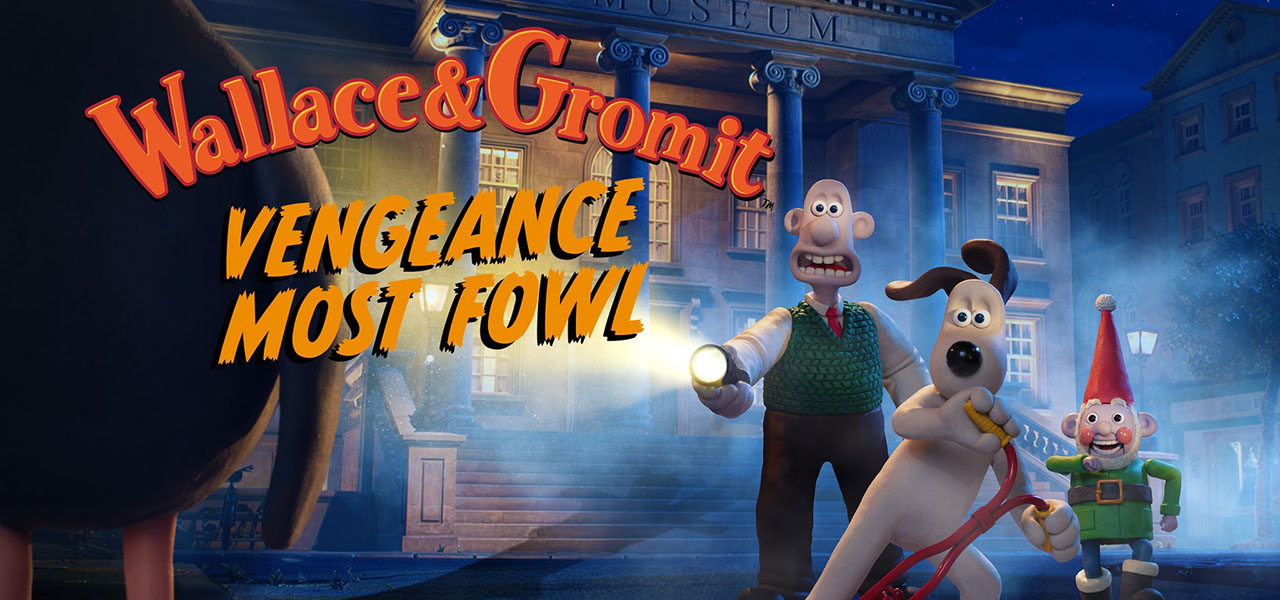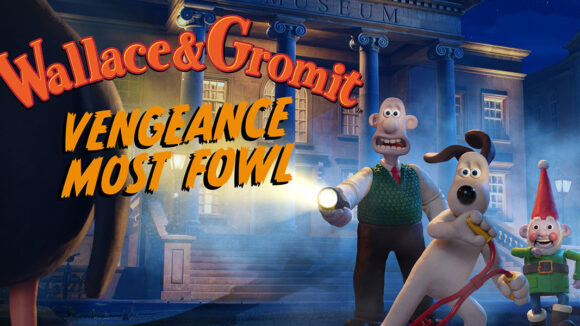

‘Wallace & Gromit’ Directors Nick Park And Merlin Crossingham On Comedy Craft: ‘From The Mundane Comes The Ridiculous’
Nick Park and Merlin Crossingham, directors of Wallace & Gromit: Vengeance Most Fowl, join Cartoon Brew’s Cole Delany for a cup of tea and a half-hour chat discussing Aardman Amimations’ second feature to star the cheese-loving North of England inventor Wallace (voiced by Ben Whitehead) and his non-verbal, long-suffering, but ever-loving canine Gromit.
Park needs no introduction as the thoughtful and sweet-natured stop-motion impresario who created his alter-ego Wallace (originally voiced by Peter Sallis) as the star of his National Film & Television School graduation short film, A Grand Day Out (1989). Crossingham, meanwhile, was key animator on Aardman’s first feature, Chicken Run (2000), and was another key collaborator on Aardman’s droll, documentary-style stop-motion comedy series, Creature Comforts. He makes his feature film directorial debut, collaborating with Park, with Vengeance Most Fowl.
Watch the interview below:
Wallace and Gromit’s latest adventure, which features the return of the menacing beady-eyed penguin baddy Feathers McGraw, premiered worldwide (excluding U.K.) on Netflix last Friday. Topics in our interview include the filmmakers’ connections to their beloved, quintessentially-British creations, and how executives at Netflix were wise to realize not to mess with perfection. Park observed that the humor and the richness of its detail sprinkled through the feature film’s set dressing, are the natural outgrowth of a carefully home-grown aesthetic. “We make this stuff, because it makes us laugh,” he said.
Their creative approach springs from writing sessions that are filled with what Crossingham refers to as “shameless ‘punnage’ the whole time.” Humor and, in particular, puns, nevertheless require careful curation as part of the modern studio zeitgeist. “Back in the day,” Crossingham said, “no one ever checked those things from the legal department. Now everything we have to check. The laws of parody have changed in entertainment, and the litigious side of our society has moved on a peg.”
Both Crossingham and Park reveal a gleeful love of classic Hollywood cinema, particularly the films of Alfred Hitchcock. Park cited Judith Anderson’s portrayal of the sinister Mrs. Danvers in Hitchcock’s 1940 Rebecca as an influence for the villainous demeanor of Feathers, and the 1960 MGM-British sci-fi thriller Village of the Damned as an inspiration for the film’s menacing army of glassy-eyed autonomous garden gnomes. “I just love to be frightened,” he added.
The duo admitted their trepidation at bringing Feathers back to the screen, not wishing to spoil fans’ memories of Wallace and Gromit’s earlier adventures. But Park admitted that once they committed to unleashing their inscrutable supervillain again, narrative elements quickly fell into place. “The story got better than the idea,” said Park, citing Orson Welles. Crossingham noted the emotional impact allowed perhaps “a slightly bigger emotional story arc than we have ever had before” for their stop-motion heroes.
Other topics include the insidious detailing of the gnomes, balancing the textures of comedy with cinematic lighting, and the design of the film’s third-act action sequence that the filmmakers undertook as a Bond-style chase sequence on an ultra-slow-moving British canal. “From the mundane comes the ridiculous,” Crossingham observed.
